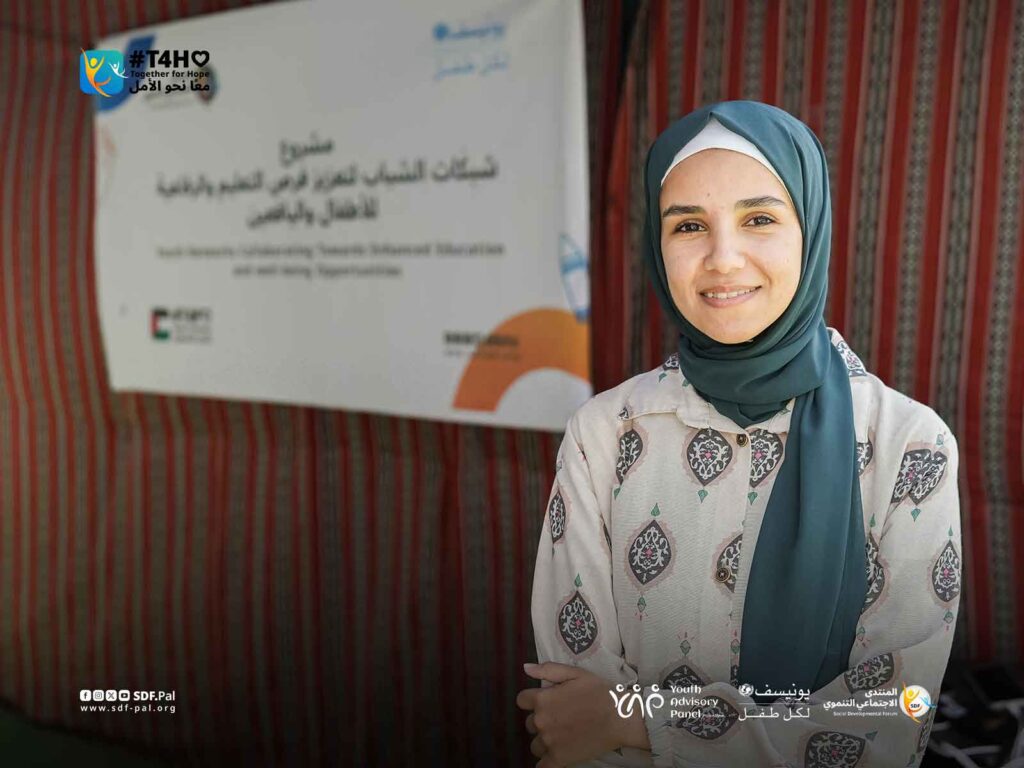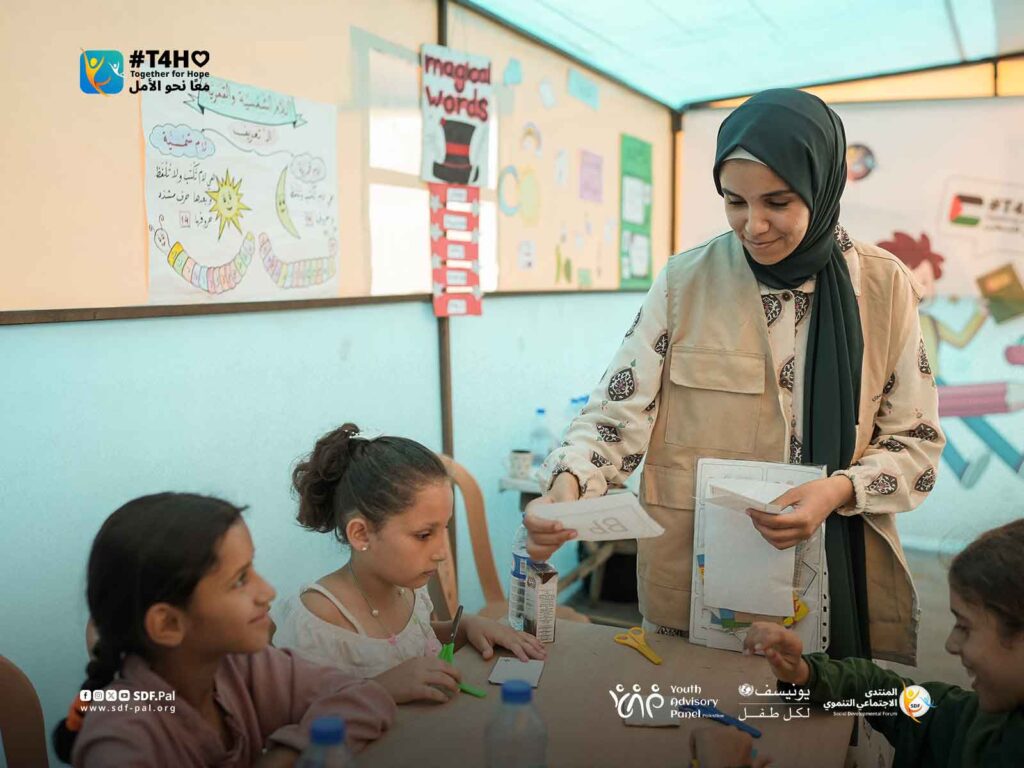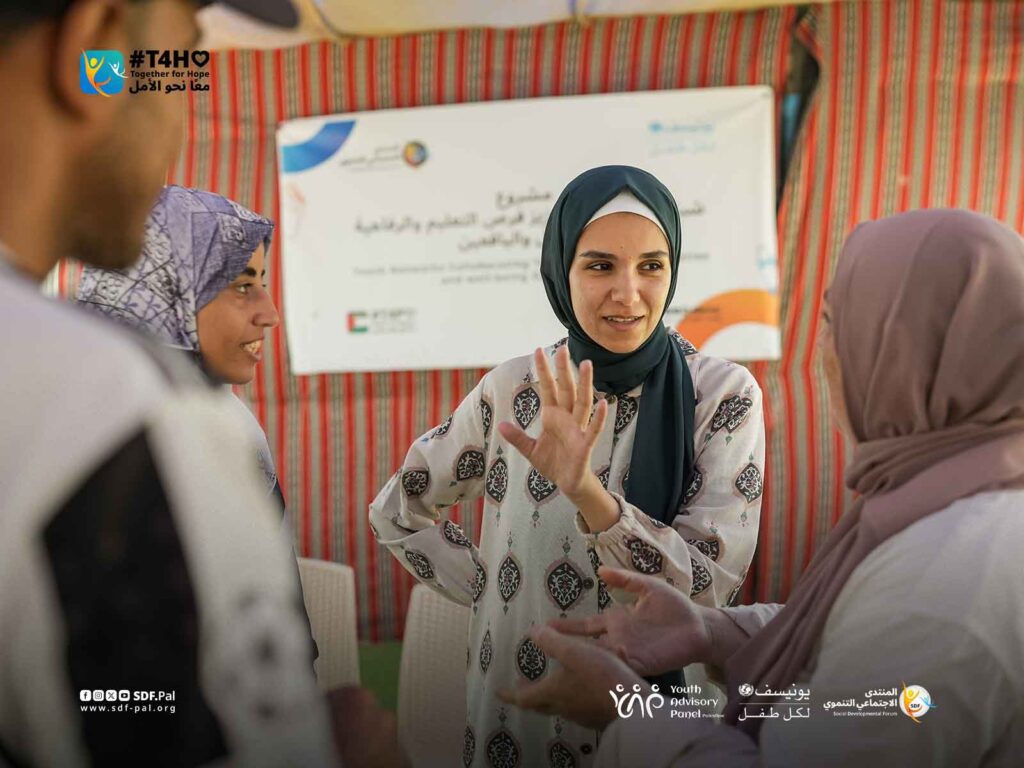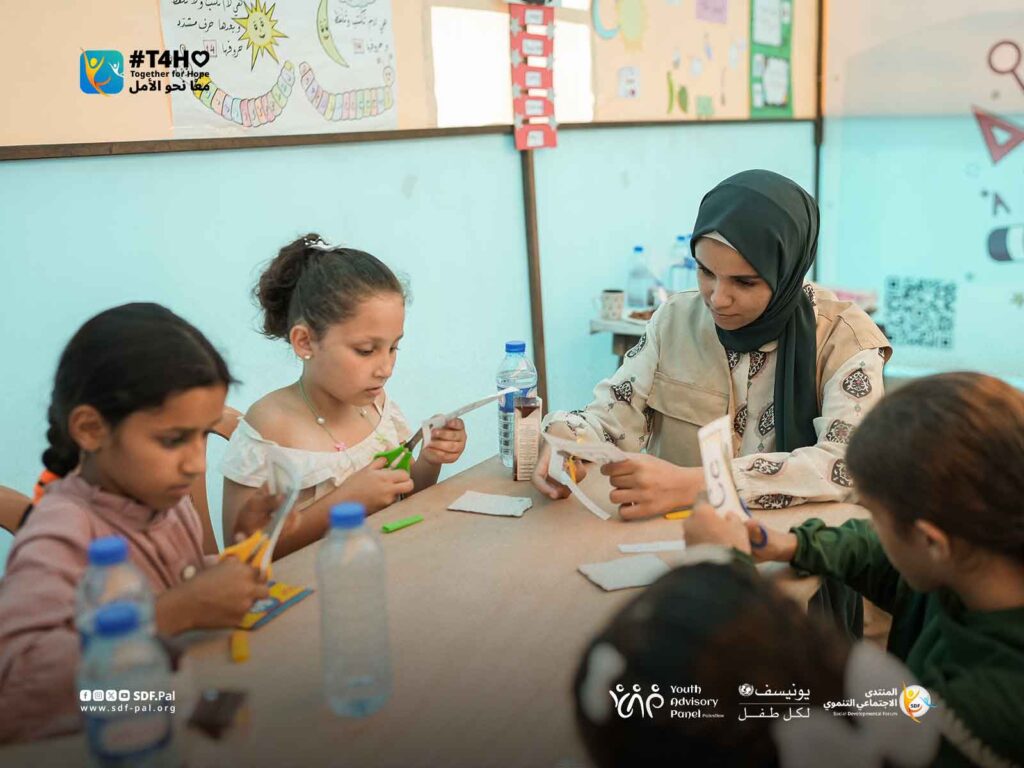Sondos Al-Fayumi: Teaching mitigates the void of displacement

Last August, I joined the Social Developmental Forum (SDF) as a teacher. I have been displaced from Gaza City, and I currently live in Deir Al-Balah. Since leaving Gaza in November, I have been overwhelmed by a sense of alienation; despite this estrangement of having to live in a place where I don’t belong, I found solace in teaching and being among children, from whom I learn as much as I teach.
Since the onset of inaugurating the Safe Learning Spaces, students arrived with their families, bringing a spirit of optimism and eagerness. Despite their varying ages and backgrounds, they all sought a safe atmosphere that could restore the school routine they had lost for nearly a year. The burden of displacement and daily struggles in Gaza deprived children of playing, learning, and feeling safe. These challenges made them yearn for returning to a classroom, drawing using colorful pens, writing in their neatly arranged notebooks, and meeting friends—even if that class was just a tent in a displacement camp.

Before starting my classes at the SLSs, I participated in intensive workshops led by educational experts and artists. These sessions focused on equipping us with a unique educational approach that considers children’s psychological and emotional needs. Unlike conventional teaching styles, the SDF team embraced active learning, incorporating play, theater, storytelling, and crafts using recycled materials to make learning more enjoyable and accessible for children burdened by consecutive wars.
I noticed significant changes after a few months of working in the learning spaces; children who were initially hesitant have become committed to attending their classes. They come early and participate actively in all sessions.
What sets SDF’s spaces apart is the creation of an environment where every child feels heard and valued. Through games and open discussions about their interests, dreams, and memories, children have become capable of expressing themselves freely and openly. This approach creates an atmosphere where they address pain through hope.

I recall a class where I introduced new English vocabulary about professions. I asked each student to imagine themselves in a job interview for their dream career. Their answers were diverse and insightful, reflecting their aspirations for a better future despite the harsh realities they face. I was particularly impressed by their ambitions, their deep understanding of their surroundings, and their compassion for others. Their thoughts revealed profound ideas, a deep sense of national identity, and an evident passion for just peace.
The child who used to carry only a school bag now shoulders losing loved ones, the pain of displacement, and repeated farewells. These children need to experience the spontaneity of childhood—to write, draw, jump, experience new things. Childhood is a time for exploration, and making mistakes is an integral part of this journey. For me, it is essential to make sure that these spaces are safe so that children’s voices are protected, heard, and valued.

The children learning the alphabet today have witnessed their childhood’s foundations collapse before their eyes—a home destroyed, a family scattered, and memories buried under the rubble of wars. Yet, their spirits persist, searching for light amid the darkness, for a dream that resists fading despite everything they’ve endured. The children’s innocence and resilience are inspirational and equipped me with strength and unwavering hope that tomorrow, no matter how distant, will bring new light and dreams that refuse to be buried beneath the debris.

